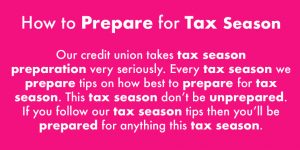Imagine you’re sitting in a marketing meeting. Besides the uncomfortable chairs and the limited selection of bagels, things are going great! Ideas are flying for new mission statements and punchy, engaging taglines. But then your new colleague Shelly perks up and suggests adding a blog to your credit union website. Actually, she insists on it. “It’s what everyone’s doing” she condescendingly explains.
You’re puzzled. You’ve read blogs before…
Your friend from college has a blog on which she posts endless selfies of herself and her fashionably dressed toddlers. Your neighbor has one which is oozing with recipes for slime. SLIME.
What has a credit union got to do with anything like that?
This blog-worthy baby may be cute, but I doubt she knows much about finance.
With these examples in mind, I don’t blame you for not seeing the connection.
But blogs can be about much more than just babies and slime. When approached with the right attitude, a blog can be a powerful marketing tool for any company. This is especially true for organizations dedicated to individual customer service, like credit unions.
And however annoying Shelly might be, she’s sort of right. IMPACT reports that “65% of marketers planned to increase their use of blogging in 2017” (Social Media Examiner) and that in fact, “53% of marketers say blogging is their top content marketing priority” (Hubspot). We’re all for being your own person and standing out from the crowd, but sometimes a bandwagon is worth hopping on.
In this comprehensive guide we’ll tell you everything you need to know to start your own business blog—the WHAT, the WHY, and the HOW.
♦
THE WHAT // AKA So what is a blog for a credit union, then?
While today you can find blogs on just about any subject you can imagine, you can separate most into one of two categories: personal or business.
Personal blogs:
are like the ones mentioned above: websites that are maintained by an individual documenting his/her life or covering a specific subject. Many personal bloggers do earn money by blogging (through ads or affiliate links) and could therefore be considered professional. But they are not business blogs as they are not blogging on behalf of a company.
Business blogs:
are article-based websites (or, more often, section of a website) affiliated with a company. They may be maintained by one or more employees and can feature pieces on a variety of topics.
Common topics of interest for credit union blogs are:
- Educational content about personal finance
- Credit union news or reports
- Event announcements
- Community involvement updates
- Customer success stories
It’s probably obvious by this point, but your credit union blog would be the latter. You leave the vacation pics at home and put on the persona of the company. Your focus is on the needs of your members—providing them with what they want or need to know.
♦♦
THE WHY // AKA Blogging sounds boring. Why does it matter?
True, the idea of a business blog may seem dry at first, but you’d be surprised at what a successful marketing tool it can be.
An effective credit union blog will accomplish 3 things: it will draw web traffic to your page, build trust with your base, and make your readers like you! Sound far-fetched? Let’s look at each claim a little closer.
1. Draw Web Traffic
This one is fairly straightforward. The more content you have, the more pages search engines have to crawl and index, and the more opportunities you have for keyword usage. All of this will help to drive your site up the Google rankings so that your customers are more likely to see your website on the first page of search results.
But in order to move up the rankings, your site needs to make it into the search results in the first place. If you use a blog to publish articles offering solutions to problems that your members—or prospective members—face, then your members are much more likely to find your website in response to searches about those problems.
Say I google, “How to refinance a house.” Your credit union may have great answers for that, but unless you have content on your website specifically focusing on that question, how would I know? Now, if you publish a post called, “5 Things to Know Before Refinancing Your Home,” that gives Google a reason to showcase your site as a place for answers.
Here’s an example of how BloomCU uses our blog to answer customer questions.
The more subjects you tackle, the more reasons users have to stumble upon your site. Even better, you can help direct traffic to your site by sharing your blog posts in targeted channels where members and potential members hang out. Share your content on Facebook, Pinterest, Twitter, email lists, and any other platforms you might use. The more people see your post, the more likely you are to get visitors.
2. Build Trust
The subjects you cover in your blog also provide you with more opportunities to build trust with your membership demographic. One of the primary functions of credit union blogs is to act as a resource center. This is where your flex your financial muscles and supply members with educational content.
Think about the questions you get from members on a daily basis
- How do I set up a mortgage? What should I know before I buy a used car? How do I start a retirement fund?
Consider the financial hurdles facing your credit union’s member demographics
- How to pay for college, buy a first home, handle union strikes, or saving for retirement
If your blog provides quality answers to important questions, not only are you more likely to attract new visitors via web searches, you offer reasons for those visitors to trust and respect your establishment. Double whammy!
Think of your blog as the personal web presence of your credit union. Show that you care about the problems they face and that you are an easily approachable, trusted resource they can count on to solve them.
3. Make Your Readers Like You
Along with building trust, your blog is also a place to enhance your brand identity. What sets you apart from the big banks? From other credit unions? A blog is a great place to express that!
Beyond acting as a resource center, your blog can function as your CU Newsroom, a place where you share updates while simultaneously building your brand. Consider what aspects of your credit union you would like to emphasize. These focal points will lead you directly to your topics.
For example, would you like to highlight your credit union’s:
Transparency?
Post about credit union news, policy changes, event announcements, or reports!
- “We’re opening a new branch!”
- “We’re holding our annual meeting this June”
- “New Late Fee Policy Starting May 2019
A good example of a Newsroom post from HFS Credit Union.
Effectiveness?
Publish member success stories!
- “We helped Karen save $5,000 per year”
Dedication to your local community?
Write articles about your community involvement!
- “Our credit union recently donated $50,000 to the Red Cross”
The Newsroom model is a great way to keep members in the know and to highlight your credit union’s achievements in a natural form. Just be careful not to clutter your blog with overt sales messages. This is a place to celebrate your credit union with your members, not to shove it down their throats.
Do this right and your members and web visitors will build positive associations with your brand and will feel taken care of. In short, they’ll have more reasons to like you.
♦♦♦
THE HOW // AKA I was just assigned to write a post what do I do??
So, the task of writing this week’s blog fell on your desk? Never fear, we’ve compiled a list of FAQs to get you on your way.
Q: What should I write about?
A: You have options! But remember, write only what members want or need to know.
Remember, you can be your members’ resource center. Make a list of the questions members ask and pick one to answer. After all, you’re the expert! Be their Yoda. (But write with proper syntax you should).
Or act as their CU newsroom! Keep them updated on important changes or share exciting credit union news with them. Your members might not know to search for this information, so it’s important for you to share it in a place they will see it, your blog.
Most credit unions combine the two models, but we suggest emphasizing the resource center. Articles in both of these camps should, of course, be written with your members in mind. But resource posts are more likely to show up in searches by potential members looking for advice. Use these posts to draw them in! If you create quality content, then it’s not even marketing trickery—it’s providing a service.
If you still need convincing, check out our recent blog post, “Why Educating is Better Than Promoting” for more evidence.
Q: How long should my post be?
A: Most posts vary between 500 words (short) to 2,500 words (long), but it depends on the results you want.
 Post length varies greatly. You might see statistics asserting that Google favors long, in-depth content with high word counts in its page rankings. This is on the whole, true. While short 500 word posts used to be the norm, 1,500 to 2,000+ word articles are becoming more frequent and popular. But don’t let this fact alone dictate your post lengths because there is more to consider than what Google favors.
Post length varies greatly. You might see statistics asserting that Google favors long, in-depth content with high word counts in its page rankings. This is on the whole, true. While short 500 word posts used to be the norm, 1,500 to 2,000+ word articles are becoming more frequent and popular. But don’t let this fact alone dictate your post lengths because there is more to consider than what Google favors.
Different lengths of content are good for different things. It’s true that long posts benefit SEO and that longer posts tend to be more frequently shared on social media. For these reasons it is good to make sure that you have quality long content on your blog.
But while they are not generally shared on social media, short posts can be great for starting conversation as they attract more comments. So if engagement with your members is a priority, a short post might be just the thing!
Just remember to respect the needs of the topic.
Never artificially bloat the length of your post, adding filler to drive up word count. If a question is simple, just answer it! If a question is technical and specialized, take the time to describe it thoroughly. If that takes 3,000 words, all the better! But this doesn’t give you license to ramble. Blog writing should always be clear and as concise as possible.
Q: How often should I publish?
A: Monthly, weekly, or daily. Just be consistent and have a plan.
Again, as is the case with word count, quality is better than quantity. Not only is fresh content valuable for sharing on social media, your website, and your email list, new posts will also help with your Google PageRank (how close to the top of search results your site appears). But more important than PageRank, remember that Google places a premium on high quality, detailed, original content. Keep in mind that while not technically “punishing” copied or duplicate content, Google also does not reward it.
So, consider your bandwidth and choose a blogging schedule that works for you. While daily or weekly is optimal, it is better to produce high quality content on a monthly basis and be consistent, than create sub-par daily posts or later abandon the blog.
Q: How do I structure a blog post?
A: Have a clear outline and let you readers know it.
Remember those 5 paragraph essay structures you had drilled into your head in elementary and middle school, only to learn later that they are kind of bogus? This is actually a time you can use them!
Blog writing needs to be more clear and direct than many other forms. You want your readers to:
- Be drawn in by your introduction
- Have an outline of your argument by the end of the introduction (often in the form of a promise, “We will share 5 great ways to start your retirement fund today”)
- Clearly divide your main points
- Be able to summarize your argument
- Come away with a call-to-action
Simple structures therefore work well. Present a problem, promise a solution, present main points, summarize, and outline the next step.
Q: Are there style rules for blogs?
A: There are some universals (see below), but each credit union may have a slightly different style or tone depending on their brand identity. Talk to your marketing team to establish an in-house style.
Tone: Typically more informal than the rest of the website. This is a place to personally interface with your members, so try to be conversational. Informal doesn’t mean chatspeak, however. You can probably leave your “lols” at home.
Sentence Length: Short. Keep your readers engaged and your writing concise.
Paragraph Length: Again, short. Long paragraphs can seem intimidating, especially when reading on a cell phone. Visually break up your points by writing short paragraphs to make your post more approachable.
Q: Should I include visuals?
A: Yes.
Like short paragraphs, lists, italics, boldface, and headings, images help to break up blocks of text. This provides a visual structure to the article and makes the article more appealing. Codeschedule reports, for example, that “their top ranking posts contained an image every 200 words.”
Q: What is SEO? Do I need to worry about it?
A: SEO stands for Search Engine Optimization. And yes. You should think about it.
We’ve actually already alluded to SEO throughout this post. Search Engine Optimization is the description for tactics used to boost your website’s Google PageRank. The higher the rank, the farther up your site appears in Google search results. There are many factors which contribute to SEO: depth of content, length of post, and use of keywords.
There are many ways to improve your SEO: creating longer, more in-depth posts, publishing more frequently, incorporating keywords into your headlines, headings, page titles, and alt text for images. The first step is to determine important keywords for your industry and topics. Using Google AdWords’ Keyword Planner is one of the easiest ways to get started with this.
But once you have your keywords, be careful not to “keyword stuff.” Throwing in keywords unnaturally to increase SEO used to be a key tactic of online marketers. But Google has gotten smarter, and so have we. Instead, write naturally and then see if you can fit in some keywords.
Not only is keyword stuffing ineffective, it’s also terrible to read.
For a more in-depth discussion of SEO see our recent post: “What Every Credit Union Needs to Know about SEO.”
♦♦♦♦
Phew! We know. This may seem like a lot. But the more you blog, the more second nature it will all become. Start simple. Set up your blog. Write a post answering a FAQ at your credit union.
Keep your members in mind, write clearly, and serve the needs of the topic. Use this guide as a reference, but above all, use your head.
You know your members best. Now, go and share your knowledge with them.
Want more insights?
Get our crazy ideas and doable tips in your inbox.






